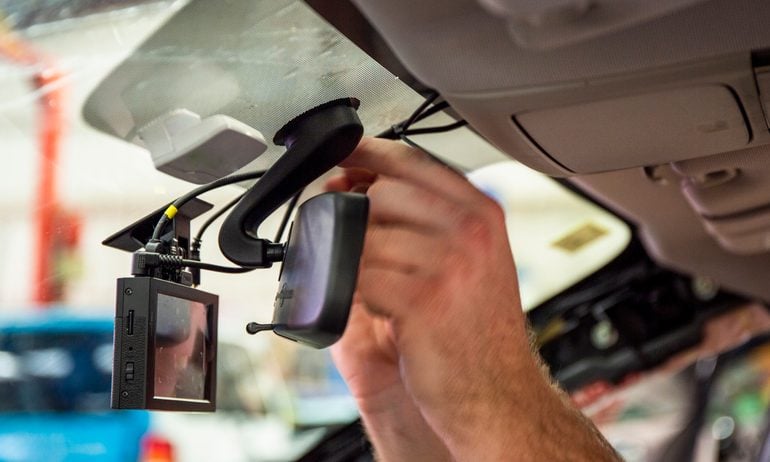Upgrade Your Old Car With New-Car Tech
For the price of a typical new-car payment, you can add any of the seven upgrades below.

Many, or all, of the products featured on this page are from our advertising partners who compensate us when you take certain actions on our website or click to take an action on their website. However, this does not influence our evaluations. Our opinions are our own. Here is a list of our partners and here's how we make money.
Time has marched on since you last bought a car.
You may love the reliable, low-mileage car parked in the garage but still long to make a hands-free phone call or summon up a song off Pandora. But you don’t need to spend $35,000 on a new car just to get a rear backup camera or any of the other high-tech features you’re lusting after.
For the price of a typical new-car payment, $550, you can add any of the seven upgrades below.
1. Backup camera
Of all the safety features on the market today, Consumer Reports found that drivers ranked the backup camera as the most useful. In tall vehicles, such as pickups and SUVs, the backup camera shows the blind spot under the rear tailgate. Even in small cars, the camera will help you safely park, then pull out in crowded parking lots. They became mandatory in 2018.
Prices and features vary wildly. A basic backup camera with a monitor costs less than $50. Other models that connect wirelessly and display an image on a rearview mirror are about $100. Before you choose a backup camera, review the directions to see if drilling and advanced wiring is required. If so, have the installation done by a pro.
2. Blind spot warning and cross-traffic alert
By adding radar sensors to your car, you can enjoy two popular safety features. The two that are most commonly bundled together in aftermarket kits are blind spot warning and cross-traffic alert.
If you want to change lanes, the device warns you if a car or truck is in your blind spot. In busy parking lots, even a rear backup camera might not show you a car that’s coming. But cross-traffic systems alert you to when a car’s approaching, even if it’s out of sight. This is another upgrade that might need to be done by an electronics expert.
Explore the auto-buying platforms from our partners below.
AD
3. Bluetooth connectivity
Hands-free use of your mobile phone is an important safety feature and can prevent you from getting a traffic ticket. Some basic units, selling for as little as $25, are basically plug-and-play. Simply connect the device to the auxiliary power outlet (formerly known as a cigarette lighter) or the audio input jack, and you can make and receive phone calls safely through your existing sound system.
4. Head-up display
Surprisingly inexpensive, and costing less than $100 for some models, a head-up display projects your car’s vital information on a small screen right in front of your eyes. So, instead of glancing down at the gauges, your speed and other information are in your line of sight. Installation is easy — most units plug into the car’s computer connection, under the steering wheel, and a single wire leads to the display unit on the dash.
5. Dash cam
The aftermarket is flooded with many types of dash cams that provide an array of features. In a basic unit, selling for under $100, a small camera records a looped video on a digital storage card. If you’re in an accident, the event is locked in the memory so you can download it and use it for evidence. More expensive dash cams offer other information such as vehicle surveillance, sending you a notification if someone bumps your car or breaks into it. You can install most units yourself in a few minutes.
6. Tunes, directions and apps
The head unit in your car is often a touch screen used to access the car’s features and connect with your mobile phone. Swapping out the head unit is best done by a professional, but it can add to your in-car entertainment by allowing access to your favorite apps. Prices range wildly from $50 to $500.
7. Massaging and heated seats
On long drives, it’s nice to get a massage to stay alert and feel refreshed. And, on cold mornings, heated seats warm you up before your car’s system blows hot. There are many models available for less than $100. All you have to do is put it in place and plug it into your car’s power source.
Shopping tips
Review the product description carefully to make sure it is compatible with your year, make and model of car. This is easier on eBayMotors.com and other sites that allow you to enter your car’s information first, then display compatible products.
Be realistic about your installation abilities. If drilling and wiring is required, have the upgrade installed by an electronics expert, a mechanic or the dealer.
Search for information about the best products on car forums dedicated to your vehicle. This way, you can contact other owners of your type of car for advice.
YouTube is a fount of information about selecting and installing vehicle upgrades.





